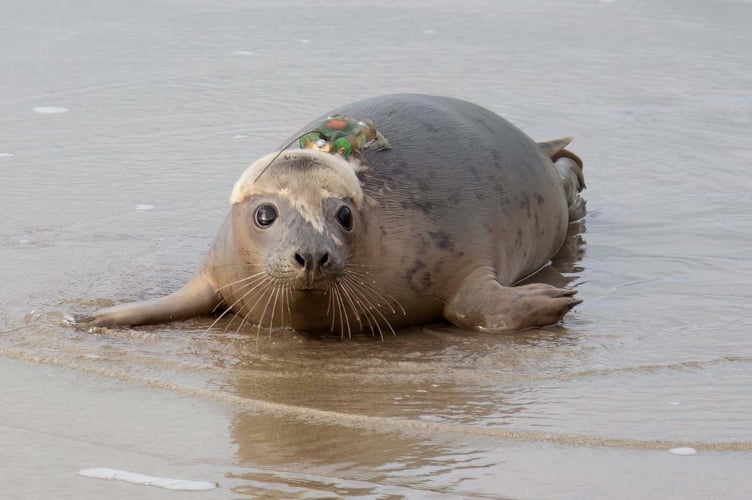RESCUED seal pups released with GPS trackers have been spotted swimming in France and Ireland - after being released from the British coast.
Cornish Seal Sanctuary and University of Exeter have tracked movements of 16 rehabilitated seal pups released back into UK waters this winter.
From Cornwall to France, Brixham to Ireland, these young seals have been tracked moving in international waters.
The first pup fitted with a tag, Maggot, made an unexpected beeline toward Brittany, travelling over 150 miles.
Selkie, rescued from Jersey in January, became the first to cross international waters - swimming up the River Somme in northern France before settling in the eastern English Channel, where he’s remained for several weeks.
Whirligig, a pup rescued from Weymouth, headed straight back to his local waters after being released, and was even spotted lounging on the pontoons of Brixham Harbour this spring.
And Dung Beetle, a pup released in South Cornwall, headed straight for the southern coast of Ireland and is still exploring the seas near Wexford.
The data is helping researchers and animal care teams understand how rescued seals reintegrate into their natural environment; and the early results are already surprising the team.
Anne Van Domberg, senior animal care specialist and research coordinator at the Cornish Seal Sanctuary said: "For the first time, we're seeing where these pups go, how quickly they settle, and where they find feeding grounds, the early data gives us valuable insight into the success of rehabilitation and the behaviour of young seals post-release.”
Two other tagged seals - JP and Bug - have also been spotted in the wild, feeding and thriving along the Cornish coast.
The Sanctuary rehabilitated over 30 pups over the 2024/25 winter season - a period that also saw an unusually high number of sick and injured arrivals, requiring intensive veterinary care, surgery and long hours from staff.
Anne added: "We rescue seals with the aim of releasing strong, healthy animals back into the wild; but thanks to this technology, we’re finally able to follow their stories beyond the shoreline,"
"It’s amazing to see them thriving, exploring, and in some cases, travelling hundreds of miles. It’s real proof that our work matters. It’s so exciting to see where they head off to and heartwarming to know that they are doing so well out there in the wild”
The Sanctuary also alerted the public on how to behave around seals in the wild, such as keep a respectful distance of at least 100 metres from them.


.png?width=209&height=140&crop=209:145,smart&quality=75)


Comments
This article has no comments yet. Be the first to leave a comment.